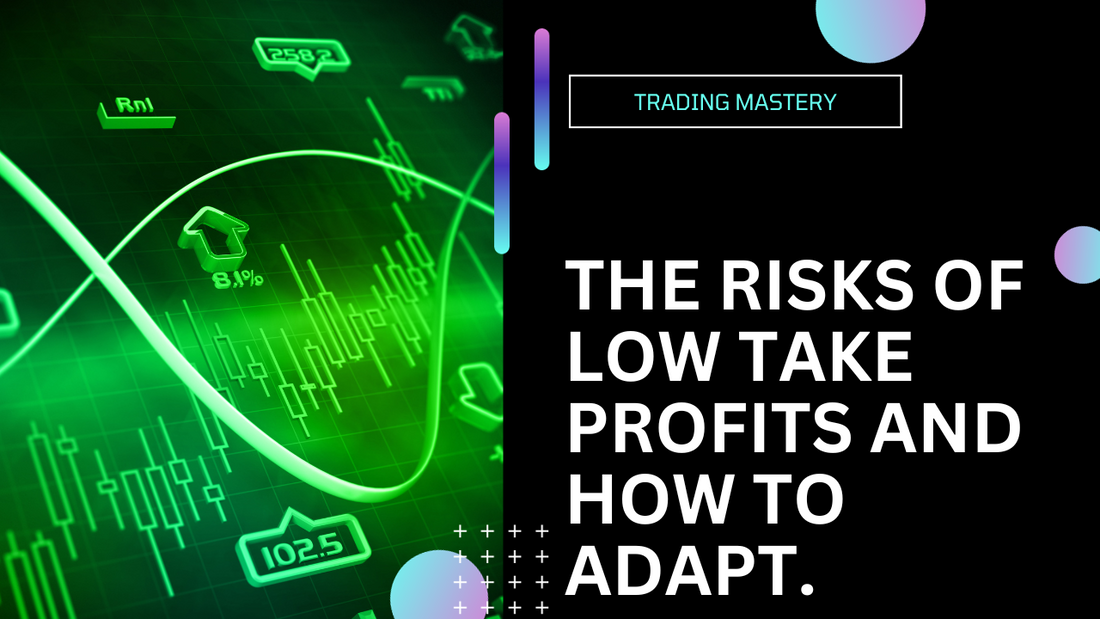
The Risks of Low Take Profits: Why Forex Traders Need to Adapt
Share
Forex trading, also known as foreign exchange trading, is a popular investment option for individuals looking to diversify their portfolios. It involves buying and selling currencies with the aim of making a profit from the fluctuations in exchange rates. While there are various strategies that traders employ to maximize their gains, one aspect that is often overlooked is the take profit level.
What is a take profit level?
A take profit level is a predetermined price at which a trader decides to close a trade and secure their profits. It is an essential component of any trading strategy as it helps traders manage their risk and lock in gains. However, some traders make the mistake of setting their take profit levels too low, which can have detrimental effects on their overall profitability.
Why do traders set low take profits?
There are several reasons why traders may set low take profits. One common reason is the desire to secure quick profits. Traders who set low take profits believe that by closing their trades early, they can guarantee a profit and avoid potential losses. Additionally, some traders may set low take profits due to a lack of confidence in their trading abilities or fear of missing out on potential gains.
What are the risks of low take profits?
Setting low take profits can expose traders to several risks. Firstly, it limits their profit potential. By closing trades prematurely, traders may miss out on significant gains if the market continues to move in their favor. This can result in missed opportunities for larger profits and hinder the overall growth of their trading account.
Secondly, low take profits can lead to a poor risk-reward ratio. A risk-reward ratio compares the potential profit of a trade to the potential loss. When traders set low take profits, they often end up with a risk-reward ratio that is skewed in favor of the potential loss. This means that even if they have a high win rate, their overall profitability may be compromised.
Lastly, low take profits can increase the likelihood of premature stop-outs. Stop-outs occur when a trade is closed due to reaching the stop loss level, which is the price at which a trader decides to exit a trade to limit their losses. When traders set low take profits, they are more likely to experience premature stop-outs, resulting in unnecessary losses.
How can traders adapt?
To mitigate the risks associated with low take profits, forex traders need to adapt their trading strategies. One approach is to use a trailing stop loss, which automatically adjusts the stop loss level as the trade moves in the trader's favor. This allows traders to capture more profits while still protecting themselves from potential losses.
Another strategy is to set take profit levels based on technical analysis and market conditions. By analyzing price patterns, support and resistance levels, and other indicators, traders can identify potential profit targets that align with the market's movements. This approach helps traders set more realistic take profit levels that maximize their profit potential.
Furthermore, traders should focus on developing a disciplined mindset and sticking to their trading plans. Emotion-driven decisions, such as setting low take profits out of fear or greed, can lead to poor trading outcomes. By following a well-defined trading plan and maintaining discipline, traders can make more informed decisions and improve their overall profitability.
In conclusion, setting low take profits can expose forex traders to unnecessary risks and hinder their overall profitability. By understanding the potential drawbacks of low take profits and adapting their trading strategies, traders can maximize their profit potential and achieve long-term success in the forex market.



